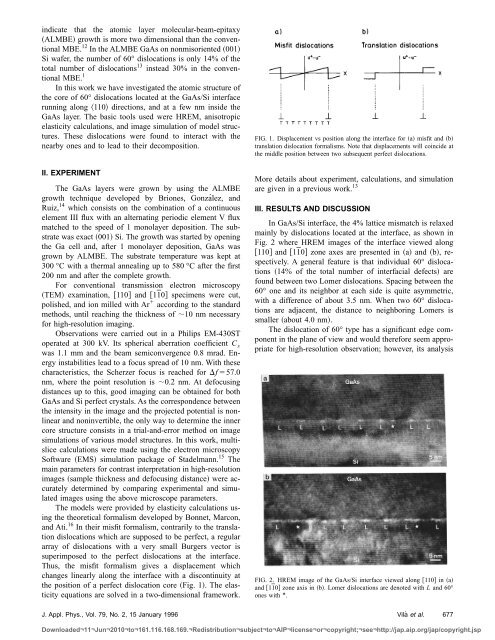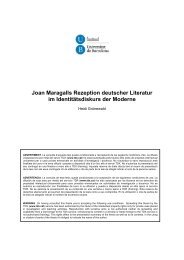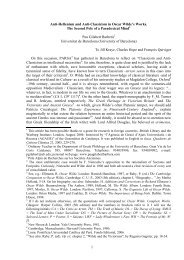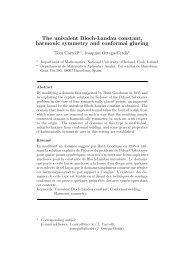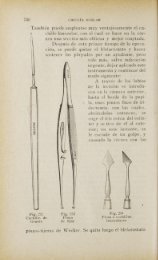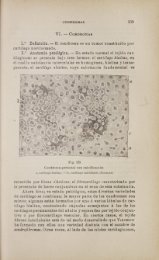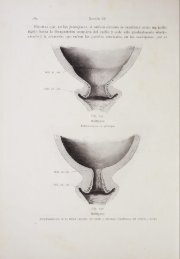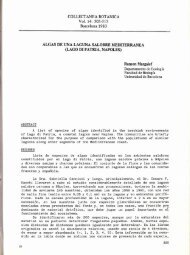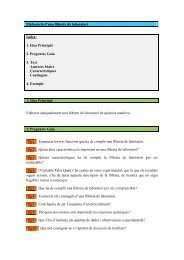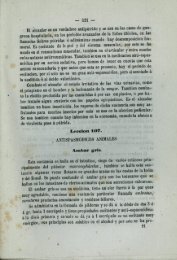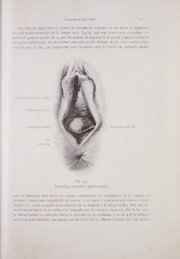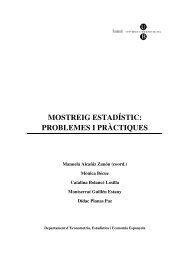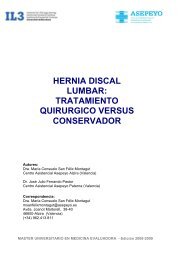Structure of 60° dislocations at the GaAs/Si interface - Universitat de ...
Structure of 60° dislocations at the GaAs/Si interface - Universitat de ...
Structure of 60° dislocations at the GaAs/Si interface - Universitat de ...
You also want an ePaper? Increase the reach of your titles
YUMPU automatically turns print PDFs into web optimized ePapers that Google loves.
indic<strong>at</strong>e th<strong>at</strong> <strong>the</strong> <strong>at</strong>omic layer molecular-beam-epitaxy<br />
ALMBE growth is more two dimensional than <strong>the</strong> conventional<br />
MBE. 12 In <strong>the</strong> ALMBE <strong>GaAs</strong> on nonmisoriented 001<br />
<strong>Si</strong> wafer, <strong>the</strong> number <strong>of</strong> <strong>60°</strong> <strong>disloc<strong>at</strong>ions</strong> is only 14% <strong>of</strong> <strong>the</strong><br />
total number <strong>of</strong> <strong>disloc<strong>at</strong>ions</strong> 13 instead 30% in <strong>the</strong> conventional<br />
MBE. 1<br />
In this work we have investig<strong>at</strong>ed <strong>the</strong> <strong>at</strong>omic structure <strong>of</strong><br />
<strong>the</strong> core <strong>of</strong> <strong>60°</strong> <strong>disloc<strong>at</strong>ions</strong> loc<strong>at</strong>ed <strong>at</strong> <strong>the</strong> <strong>GaAs</strong>/<strong>Si</strong> <strong>interface</strong><br />
running along 110 directions, and <strong>at</strong> a few nm insi<strong>de</strong> <strong>the</strong><br />
<strong>GaAs</strong> layer. The basic tools used were HREM, anisotropic<br />
elasticity calcul<strong>at</strong>ions, and image simul<strong>at</strong>ion <strong>of</strong> mo<strong>de</strong>l structures.<br />
These <strong>disloc<strong>at</strong>ions</strong> were found to interact with <strong>the</strong><br />
nearby ones and to lead to <strong>the</strong>ir <strong>de</strong>composition.<br />
II. EXPERIMENT<br />
The <strong>GaAs</strong> layers were grown by using <strong>the</strong> ALMBE<br />
growth technique <strong>de</strong>veloped by Briones, González, and<br />
Ruiz, 14 which consists on <strong>the</strong> combin<strong>at</strong>ion <strong>of</strong> a continuous<br />
element III flux with an altern<strong>at</strong>ing periodic element V flux<br />
m<strong>at</strong>ched to <strong>the</strong> speed <strong>of</strong> 1 monolayer <strong>de</strong>position. The substr<strong>at</strong>e<br />
was exact 001 <strong>Si</strong>. The growth was started by opening<br />
<strong>the</strong> Ga cell and, after 1 monolayer <strong>de</strong>position, <strong>GaAs</strong> was<br />
grown by ALMBE. The substr<strong>at</strong>e temper<strong>at</strong>ure was kept <strong>at</strong><br />
300 °C with a <strong>the</strong>rmal annealing up to 580 °C after <strong>the</strong> first<br />
200 nm and after <strong>the</strong> complete growth.<br />
For conventional transmission electron microscopy<br />
TEM examin<strong>at</strong>ion, 110 and 11 ¯ 0 specimens were cut,<br />
polished, and ion milled with Ar according to <strong>the</strong> standard<br />
methods, until reaching <strong>the</strong> thickness <strong>of</strong> 10 nm necessary<br />
for high-resolution imaging.<br />
Observ<strong>at</strong>ions were carried out in a Philips EM-430ST<br />
oper<strong>at</strong>ed <strong>at</strong> 300 kV. Its spherical aberr<strong>at</strong>ion coefficient C s<br />
was 1.1 mm and <strong>the</strong> beam semiconvergence 0.8 mrad. Energy<br />
instabilities lead to a focus spread <strong>of</strong> 10 nm. With <strong>the</strong>se<br />
characteristics, <strong>the</strong> Scherzer focus is reached for f 57.0<br />
nm, where <strong>the</strong> point resolution is 0.2 nm. At <strong>de</strong>focusing<br />
distances up to this, good imaging can be obtained for both<br />
<strong>GaAs</strong> and <strong>Si</strong> perfect crystals. As <strong>the</strong> correspon<strong>de</strong>nce between<br />
<strong>the</strong> intensity in <strong>the</strong> image and <strong>the</strong> projected potential is nonlinear<br />
and noninvertible, <strong>the</strong> only way to <strong>de</strong>termine <strong>the</strong> inner<br />
core structure consists in a trial-and-error method on image<br />
simul<strong>at</strong>ions <strong>of</strong> various mo<strong>de</strong>l structures. In this work, multislice<br />
calcul<strong>at</strong>ions were ma<strong>de</strong> using <strong>the</strong> electron microscopy<br />
S<strong>of</strong>tware EMS simul<strong>at</strong>ion package <strong>of</strong> Sta<strong>de</strong>lmann. 15 The<br />
main parameters for contrast interpret<strong>at</strong>ion in high-resolution<br />
images sample thickness and <strong>de</strong>focusing distance were accur<strong>at</strong>ely<br />
<strong>de</strong>termined by comparing experimental and simul<strong>at</strong>ed<br />
images using <strong>the</strong> above microscope parameters.<br />
The mo<strong>de</strong>ls were provi<strong>de</strong>d by elasticity calcul<strong>at</strong>ions using<br />
<strong>the</strong> <strong>the</strong>oretical formalism <strong>de</strong>veloped by Bonnet, Marcon,<br />
and Ati. 16 In <strong>the</strong>ir misfit formalism, contrarily to <strong>the</strong> transl<strong>at</strong>ion<br />
<strong>disloc<strong>at</strong>ions</strong> which are supposed to be perfect, a regular<br />
array <strong>of</strong> <strong>disloc<strong>at</strong>ions</strong> with a very small Burgers vector is<br />
superimposed to <strong>the</strong> perfect <strong>disloc<strong>at</strong>ions</strong> <strong>at</strong> <strong>the</strong> <strong>interface</strong>.<br />
Thus, <strong>the</strong> misfit formalism gives a displacement which<br />
changes linearly along <strong>the</strong> <strong>interface</strong> with a discontinuity <strong>at</strong><br />
<strong>the</strong> position <strong>of</strong> a perfect disloc<strong>at</strong>ion core Fig. 1. The elasticity<br />
equ<strong>at</strong>ions are solved in a two-dimensional framework.<br />
FIG. 1. Displacement vs position along <strong>the</strong> <strong>interface</strong> for a misfit and b<br />
transl<strong>at</strong>ion disloc<strong>at</strong>ion formalisms. Note th<strong>at</strong> displacements will coinci<strong>de</strong> <strong>at</strong><br />
<strong>the</strong> middle position between two subsequent perfect <strong>disloc<strong>at</strong>ions</strong>.<br />
More <strong>de</strong>tails about experiment, calcul<strong>at</strong>ions, and simul<strong>at</strong>ion<br />
are given in a previous work. 13<br />
III. RESULTS AND DISCUSSION<br />
In <strong>GaAs</strong>/<strong>Si</strong> <strong>interface</strong>, <strong>the</strong> 4% l<strong>at</strong>tice mism<strong>at</strong>ch is relaxed<br />
mainly by <strong>disloc<strong>at</strong>ions</strong> loc<strong>at</strong>ed <strong>at</strong> <strong>the</strong> <strong>interface</strong>, as shown in<br />
Fig. 2 where HREM images <strong>of</strong> <strong>the</strong> <strong>interface</strong> viewed along<br />
110 and 11 ¯ 0 zone axes are presented in a and b, respectively.<br />
A general fe<strong>at</strong>ure is th<strong>at</strong> individual <strong>60°</strong> <strong>disloc<strong>at</strong>ions</strong><br />
14% <strong>of</strong> <strong>the</strong> total number <strong>of</strong> interfacial <strong>de</strong>fects are<br />
found between two Lomer <strong>disloc<strong>at</strong>ions</strong>. Spacing between <strong>the</strong><br />
<strong>60°</strong> one and its neighbor <strong>at</strong> each si<strong>de</strong> is quite asymmetric,<br />
with a difference <strong>of</strong> about 3.5 nm. When two <strong>60°</strong> <strong>disloc<strong>at</strong>ions</strong><br />
are adjacent, <strong>the</strong> distance to neighboring Lomers is<br />
smaller about 4.0 nm.<br />
The disloc<strong>at</strong>ion <strong>of</strong> <strong>60°</strong> type has a significant edge component<br />
in <strong>the</strong> plane <strong>of</strong> view and would <strong>the</strong>refore seem appropri<strong>at</strong>e<br />
for high-resolution observ<strong>at</strong>ion; however, its analysis<br />
FIG. 2. HREM image <strong>of</strong> <strong>the</strong> <strong>GaAs</strong>/<strong>Si</strong> <strong>interface</strong> viewed along 110 in a<br />
and 11 ¯ 0 zone axis in b. Lomer <strong>disloc<strong>at</strong>ions</strong> are <strong>de</strong>noted with L and <strong>60°</strong><br />
ones with *.<br />
J. Appl. Phys., Vol. 79, No. 2, 15 January 1996 Vilà et al.<br />
Downloa<strong>de</strong>d¬11¬Jun¬2010¬to¬161.116.168.169.¬Redistribution¬subject¬to¬AIP¬license¬or¬copyright;¬see¬http://jap.aip.org/jap/copyright.jsp<br />
677


